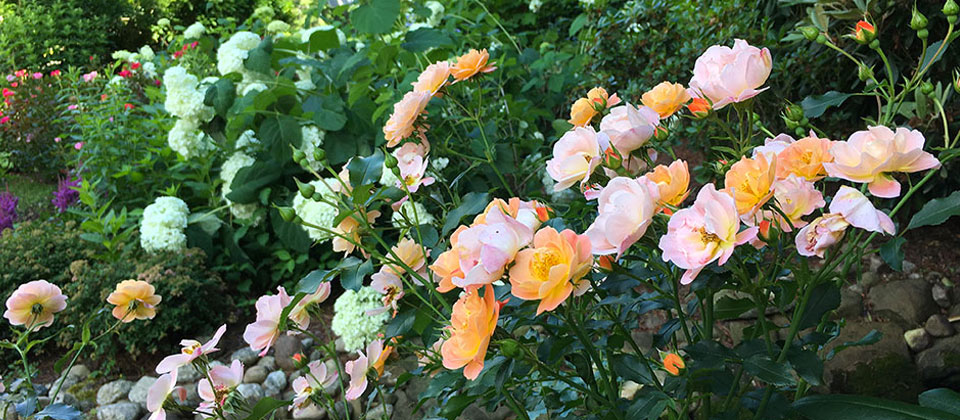For your Lawn
- Water deep and infrequently during the summer months. One inch of water early in the day about once a week is adequate.
- Help your lawn out by changing direction when mowing. Travel north to south on one mowing and east to west on the next cutting.
- In late August, prepare the lawn areas for seeding tall fescue or bluegrass. Seed or fertilize lawns the last week of August.
For your Vegetable Garden
- As parts of the vegetable garden come to an end, remove plants. Put them in your compost pile if not infested with insects or diseases. If disease, insects or nematodes have been a problem dispose of the plants to reduce the number of pests that survive the winter.
- Japanese beetles are pests this time of year. Spray as needed, but removing by hand is more effective.
For your Flower Beds
- Give houseplants a new lease on life. Repot them to give them more room for roots to grow and fresh potting soil.
- Remove faded flowers on flowering perennials to encourage a second flowering. Cut back impatiens, begonias and salvia that have become too tall or top heavy. Cutting them back will make them bushy, with more blooms.
- Perennial seeds of hollyhock, delphinium and stokesia can be sown now to produce plants for next spring.
- If plants such as petunias have become leggy and their flower production has diminished, rejuvenate them by cutting off the branches, fertilizing, and watering them. It will encourage new growth and flowering.
- Make sure hanging baskets have ample water; they will dry out rapidly in the summer heat.
- Stake tall-growing flowers to prevent them from falling.
- Monitor the water needs of container gardens daily. Move plants from hot surfaces to places that are shaded and cooler.
For your Trees & Shrubs
- Give landscape plants a second, and last, feeding of fertilizer.
- Have trees and bushes in need of pruning? Prune ‘bleeder’ trees like maple, dogwood, birch and elm, as well as the fruiting canes of raspberry and blackberry plants after harvest is over. Cut canes at ground level. Refrain from pruning spring-flowering shrubs now.
- Don’t fertilize shrubs in August, September, October or November, it could cause new growth at a dangerous weather time.
- Watch for damaging insects on evergreens. Scale, spider mites, leaf miner and leafhopper can be a problem.
- Avoid spraying pesticides on very hot days or when plants are drought stressed.
- Maintain a layer of mulch two to four inches around trees and shrubs and two inches around annuals and perennials. Keep mulch a few inches away from plant trunks or stems. Mulch keeps the soil cooler, conserves moisture, and reduces weeds.
- Compost can be added as a top dressing around your shrubs and perennials. It will help hold moisture and will enhance the soil to help promote the long-term health of your plants.
